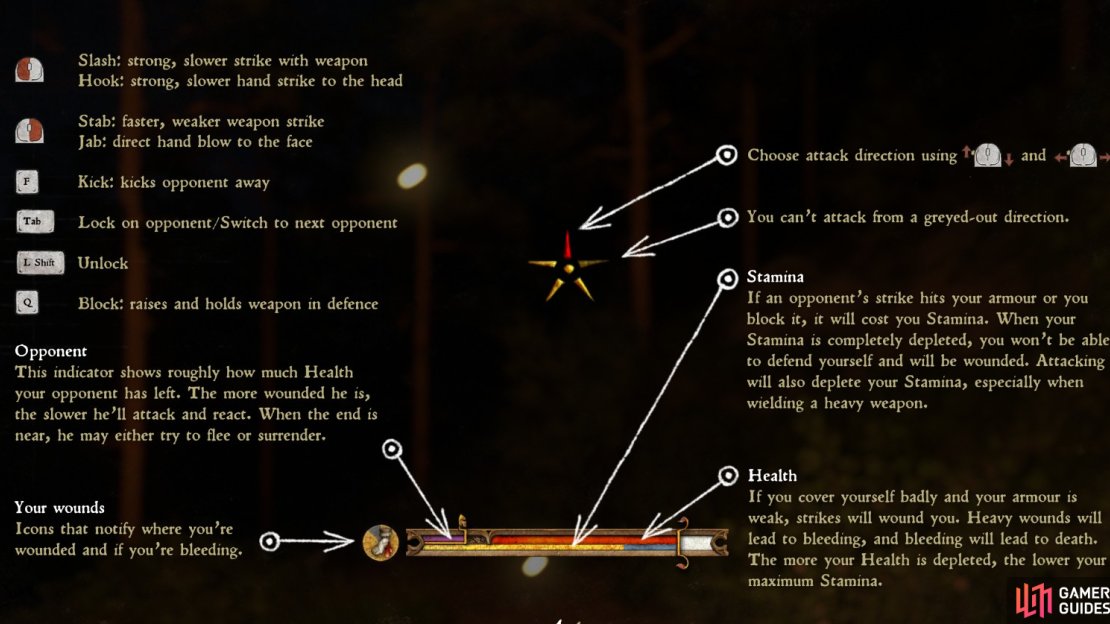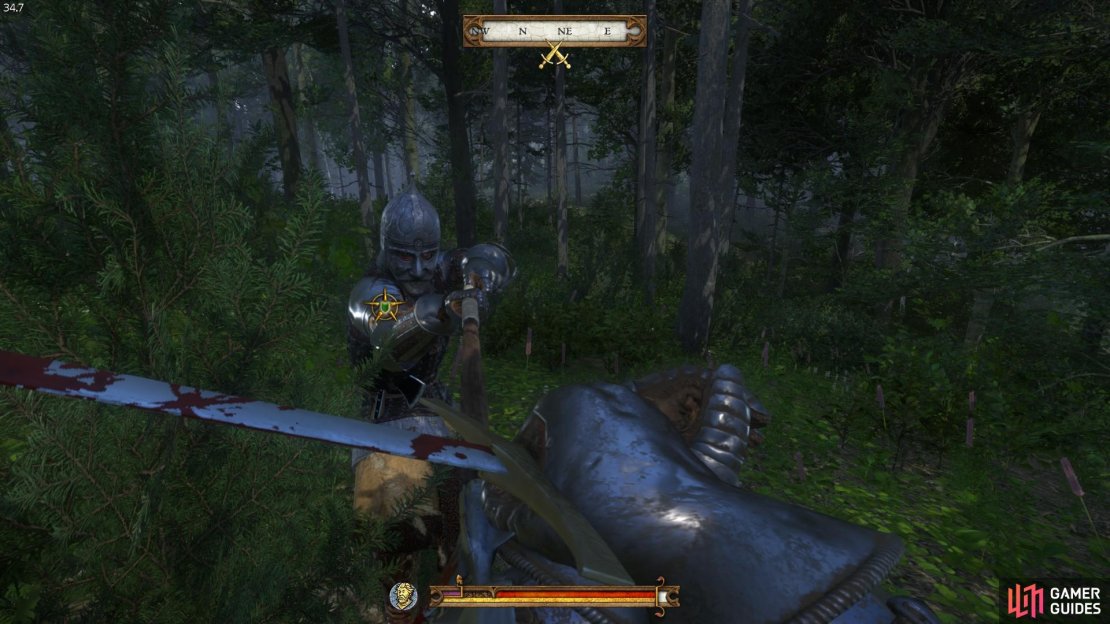The essential combat controls for PC. See Controls and Hotkeys for the corresponding PlayStation and Xbox controls.
The basics of the combat system are relatively easy to understand, but require a fair amount of practice to become consistently effective with. Due to its emphasis on realism, you will find no fancy twirls or jumps when fighting. Instead, the system is based on research from what is known of fifteenth century combat techniques. Positional damage is key; where a blow lands is where damage will be dealt, and some weapons will be unable to pierce particular types of armour. This means equipment choices are an important aspect of combat effectiveness (more on that below). Aside from the essential controls shown above, there are a number of things you can do to increase your chances of emerging victorious. These can be understood in terms of three principles: movement, reaction, and timing.
-
Movement - It is important to continually assess your position while in combat, especially when fighting multiple opponents. Consider the surrounding landscape. If you find yourself locked in a tight space, look for the safest way into an open space where you can maneuver more freely and control the flow of combat. If there is no way out, use the tight space to your advantage by ensuring that there is no way your opponents can flank you or come up from behind. It is a good idea to find the high ground from which you can swing powerful blows to the opponent’s upper body. Through all of this, never turn your back on an opponent and never stay still for too long. This is particularly important when taking into account opponents who are firing arrows at you.
-
Reaction - In order to react in an effective way at precisely the right time, you will have to pay close attention to what your opponent is doing. Here you can deploy three useful tricks; Combos, Feints and Dodges. As you use particular weapons, you will be able to choose specific perks for them. The majority of the perks on offer are Combos, allowing you to make a series of attacks in different directions which result in an undeflectable hit. Feints are performed by drawing your weapon back and holding it in place before swiftly changing the direction and releasing, thereby surprising your opponent and making a hit more likely. Dodges are performed by moving to the side or backwards just when an opponent initiates their swing.
-
Timing - As with reaction, in order to time your blocks and blows effectively you will have to pay close attention to your opponent. The two most important aspects of timing are Perfect Blocks and Ripostes. In ordinary blocking you can simply hold Q to automatically deflect most strikes. This costs a lot of stamina, particularly against multiple opponents. In order to perform a Perfect Block you must block at the precise moment when your opponent strikes, costing no stamina. This can be difficult to observe, but is helped by the green shield in the centre of the strike direction cursor (see image below). Ripostes can be performed immediately after a Perfect Block by slashing or stabbing, and can only be deflected by a Perfect Block.
Example of the green shield in the centre of the strike direction cursor which lights up when it is possible to perform a Perfect Block or Dodge.


No Comments